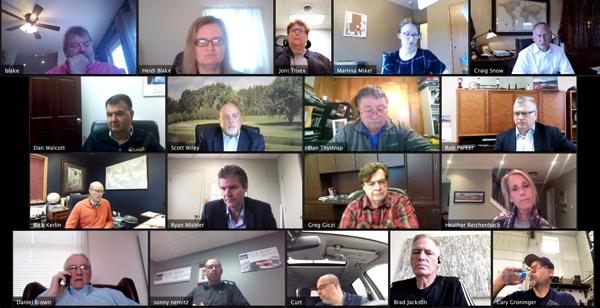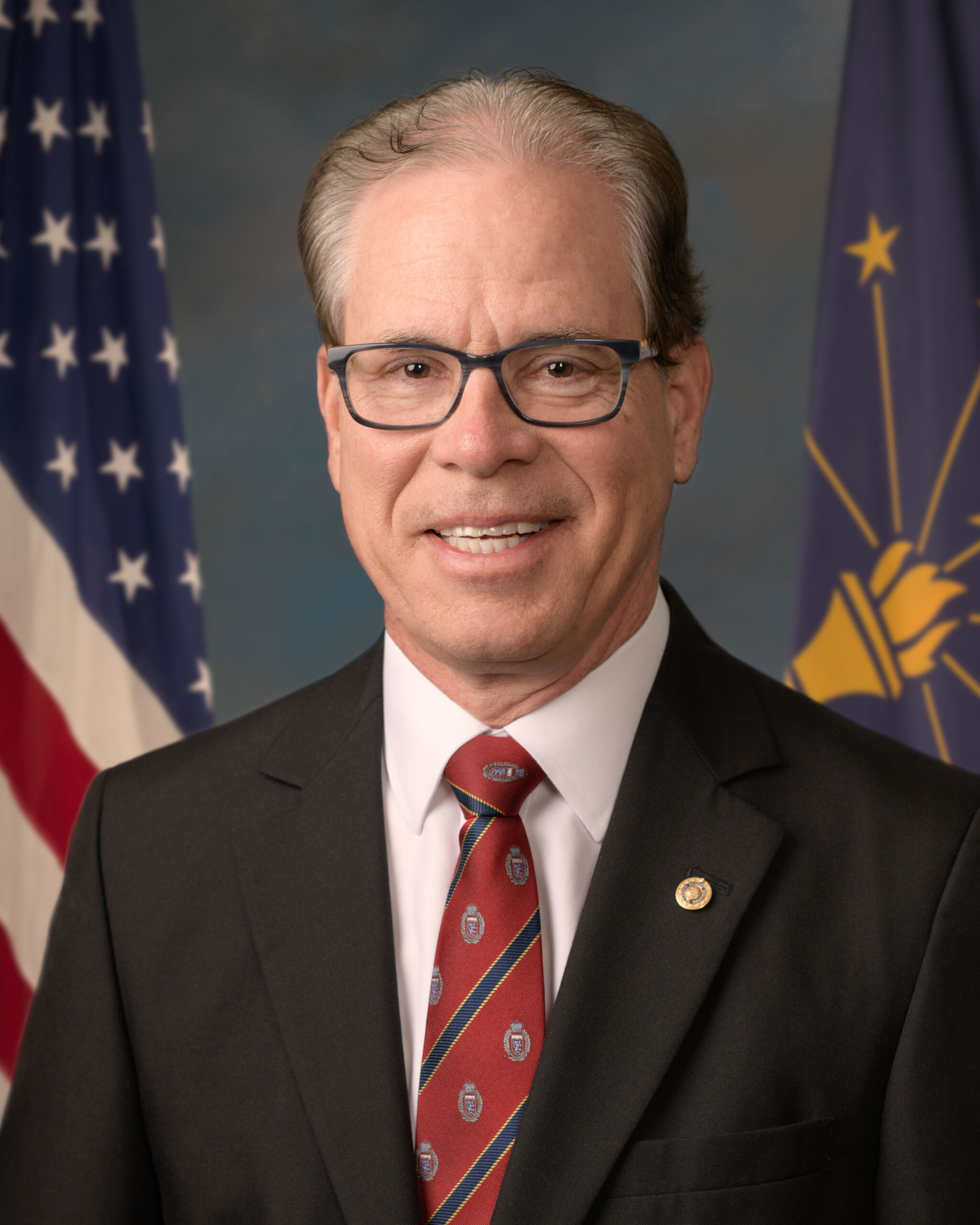
EDUCATION BILLS
Fifty percent of Indiana’s budget goes toward K-12 education, and that’s about how much time of the second Third House Legislative Review Session was spent Friday by state legislators discussing education bills down at the statehouse.
The session, held via GoToMeeting, was sponsored by the Kosciusko Chamber of Commerce. The first one was held Feb. 26, with a third planned for 11 a.m. April 23. The Indiana State Legislature convened Jan. 4 for 2021 and is scheduled to adjourn on April 29.
State Sen. Ryan Mishler said, “So, basically, what I’m working on now for the next five weeks is the budget. Every day, 12 hours a day. K-12 is 50% of that. Add higher ed and Medicaid, you’re at 80%. So, there’s 80% of our budget, so then the remaining is 20%.”
He said he knows the education piece “has a lot of people fired up. … There’s a lot of misinformation. I talked to a school board member from Warsaw down there yesterday. I think there’s quite a bit of misinformation about the education piece.”
A school funding committee met at 4 p.m. Thursday, Mishler said, and finished at 10:30 p.m. “Obviously, that’s going to be a big issue.”
He said people have written him about being disappointed in House Bill 1005, but the Senate has not even heard HB 1005. He said that’s the education piece that people “seem to have all the heartburn over.”
In the question-and-answer portion of Friday’s session, the state legislators were asked where they stood on HB 1005 and “Can you explain the shift of the money away from the public schools?”
State Rep. Curt Nisly said, “The policy has been that the money should follow the child. And, so, we have different opportunities, educational choice, in Indiana.”
He said a parent can choose to send their child to a different school district different than the one they live in.
“So, that’s been the policy here, and so, if schools don’t want competition from charters, they should just make sure that they’re providing the educational opportunities for kids,” Nisly said.
He noted that Warsaw Community Schools has “done a lot to make sure that a charter school doesn’t start in our area here.” He said there are public schools in parts of the state that aren’t doing as good of a job as is being done here in Kosciusko County and there are places in other parts of the state where charter schools “are doing a better job” than public schools.
Nisly said HB 1005 is “simply allowing money to go to other places.”
On Education Scholarship Accounts, which the state legislature is considering this session, he said what the House passed was very specific to military families, foster kids and kids with special needs. Nisly said he was supportive of that in those situations. “It’s very, very limited on those ESAs,” he said.
Mishler said HB 1005 is now in the Indiana Senate.
“This is what we’re going to do. We’re not going to have a hearing in Education, because then it gets recommitted to Appropriations, so we had SB 412, 413. We’ve already discussed most of the issues in 1005, with the exception of the 300% for the voucher and the increase in the charter grants. Those were discussed last night at this education funding meeting,” he said.
“We are looking into what parts of 1005 do we want to put into the budget. We feel it’s a budget discussion.”
He said there are three main parts to 1005.
The first is the vouchers. Currently, for a student to get a voucher to go to a private school, “You have to be 150% of free lunch, which is a little less than $75,000 a year family household income, a family of four.” Mishler said the House wants to raise it from 150 to 300%, which would be $145,000 a year for a family of four.
The original proposal would have had a cost of $150 million. Mishler said, “Which, to say it would take money away from public school, well, if they didn’t fund it, it would lower everybody’s foundation. If they fund it, then everybody’s whole. Well, it was too expensive, I believe, so they left these pathways in place that you have to jump through other hoops, even if you qualify at $145,000, which took their fiscal down to $30 million.”
He said he voted against the original voucher bill years ago, but he feels the need to correct people when he feels they’re wrong about the voucher system.
His hometown of Bremen doesn’t lose any students to the voucher program, he said. “So, if we did away with the entire voucher program, Bremen would not get one more dollar. The fee would go back to the school that those kids go back to. So, to say that it’s taking away from public schools is a stretch.”
If he was in Fort Wayne, he said that would be an opposite situation.
“If I left Fort Wayne school and went to … Luers, then that money would go from the Fort Wayne schools to Luers. So, the money you would lose money in a voucher program, currently, is if you lost a student to a voucher school. The same would hold true for charters. Your traditional public school would only lose the money if that student chose to go to a charter school,” he said.
The majority of student transfers go from one public school to another, like Wawasee to Warsaw or vice versa. Wawasee might lose that per-student money, but that money would transfer to Warsaw. “So when we’re talking about vouchers and charters, in our area, it’s usually losing a student to another traditional public school,” Mishler said.
The voucher program originally was intended for low-income students, so the question now is, is a family of four with an annual income of $145,000 a low-income family?
A second part of the 1005 is the ESAs. Mishler said there’s some “holes” in there.
“So there’s no income level on that at all,” he said, which is an area of concern. If the ESAs were approved, Mishler said there would be 3,000 kids who could “flip right away” to use them, according to the treasurer’s office. “And the first year alone would almost double the size of her office to run this program. So there are some concerns about the ESAs and the unknowns. Our caucus has some serious questions. We met with DOE, treasurer’s office. We’re trying to decide what direction we want to go on with the ESAs.”
The third piece to HB 1005 is the charter school grant, Mishler said.
“So, currently, we say money follows the child, and that holds true. But for, if you go to a charter school, you get an extra grant,” he said.
If he goes to a public school, he deals with what’s in the state funding formula. If he goes to a charter school, under current law, that charter school gets a $750 stipend for each student. The House wants to raise that to $1,000 in the first year and $1,250 in the second year.
“It seems to take away from the ‘money follows the child,’ but the proponents would say that the charters don’t get property tax money, it levels the playing field. The opponents would say it’s actually additional state funding so the state is funding those kids at a higher level than every other student,” Mishler said.
He said the Senate, in the past, has not pushed charter school grants and usually has watered those down a little. “But we’re still discussing on how far we want to go in the budget, and a lot of it depends on what we have to spend,” Mishler said.
“This is the biggest piece of the budget right here,” he said. “And until we get those three issues ironed out in the Senate, I can’t finish the budget. Once we have those things figured out, we’ll be able to get the budget done and that will be the week of Thursday, April 8.”
MOTOR VEHICLE HIGHWAY FUNDS
When the state rules changed about how highway and street departments can use funds from the Motor Vehicle Highway Fund within the last few years, that created a budget problem for Kosciusko County.
Despite attempts to address the MVH rules at the state level, Kosciusko County won’t see any relief any time soon.
Under Section 63 of Indiana Code 8-14-1-4 of the MVH Restricted Fund, 50% of MVH revenues must be deposited into the MVH restricted fund and the remainder must be deposited into the MVH unrestricted fund. Historically, highway departments have spent 30% of the revenue for restricted uses and 70% for unrestricted uses.
In an April 2020 letter from the county commissioners to state legislators, the commissioners stated, “The current restrictions have created an excess of cash in our restricted fund and a shortfall of cash in our unrestricted fund. The current legislation has created a shortfall for payroll in the amount of $1.6 million, requiring an additional appropriation to be approved by the Council to meet the needs of the highway department. This has placed a financial hardship on the county that cannot be sustained in the coming budget years.”
The letter requested the state consider removing the 50/50 restrictions in the MVH funding.
During Friday’s Third House Legislative Review Session with state legislators, hosted by the Kosciusko Chamber of Commerce, State Sen. Blake Doriot said, “I was working on a MVH funding, given Kosciusko County brought it to me.” He said it provided a little more latitude on how the Highway Department spends its highway funds. “(State Sen.) Ryan (Mishler) and I worked hard on that. And, well, guess what? (House Ways and Means Committee Chair) Doc (Tim) Brown doesn’t like it over in the House, so he’s killing that one for us.”
During the question-and-answer session of Friday’s Review Session, a person asked for an update of the MVH bill.
“I worked really hard with your highway engineering. I worked really hard with Commissioner (Brad) Jackson, trying to get this through. The County Commissioners Association really went to bat. But, we started out doing a 40-60 from 50-50 in spending and putting snowplowing in there, and it was looking very good. But, we just can’t get it to move in Doc Brown’s Appropriations Committee,” Doriot said. “We bargained with him. We went down to 50-50 and just adding the snowplowing. He would not budge, and, unfortunately, that’s the power that the chairmen have. And sometimes we think it’s bad, but there’s other times I’ve seen Ryan have to make the right decision that was not quite popular. I think Doc is wrong, but that’s really where we’re at. I don’t think we’re going to get it done this year.”
In some potential good news for the area, Doriot, who sits on the Transportation Committee, reported, “Glad to say that finally (U.S.) 30 is showing some signs of life. They’re putting out RFPs for the environmental work, from the Ohio line all the way to State Road 49. So, hopefully, it’s going to be quite a few years, but we’re going to see some relief on 30 as it comes through Warsaw and Kosciusko County.”
In February, the Indiana Department of Transportation announced it would begin a study to improve the U.S. 30 corridor from Valparaiso to the Ohio state line.
In this study, known as a Planning and Environment Linkages study, INDOT will examine various options to improve the safety, traffic flow, freight movement and economic development potential of the corridor, including the construction of a freeway, according to a news release then from the U.S. 30 Coalition. INDOT has agreed that the study will recognize the importance of U.S. 30 remaining a consistent type of roadway and not a mixture of improvements and it will not be designed to merely examine the quickest or least expensive solution.
Doriot was asked about Senate Bill 389, also referred to as the wetlands bill. The question posed was, “Given that 80% of the remaining wetlands in the state do not fall under federal protection, how will this bill impact those areas, and ultimately the quality of water, in our beautiful and valuable lakes?”
He began his response by stating there’s a lot of misinformation out there about the bill.
“We came from a position of strength. I was the second on the bill with Sen. (Chris) Garten, and we knew there would be some movement as to what we’re going to do on there. And we are not touching any wetland that is connected with a stream, to a lake, anything. Anything that you see around Lake Wawasee or Barbee Chain or any of that. That’s all false,” Doriot said.
He said they were looking at the isolated wetlands that a person may see in a farm field “where a tile hasn’t been connected, have broken down and you go to repair it, and (Indiana Department of Environmental Management) will come in and say you have to mitigate that and when you mitigate it’s up to a four-times rate, and a new wetland costs approximately $40,000 to build and plant. So at a 4-to-1, you’d be looking at roughly $160,000 to mitigate one acre of damage and replacing it with four.”
He said he thought the bill will settle in the House at the Class 1s. “So you are not going to see the wetland damage that I have people telling me about,” Doriot said, noting he had a long talk with national representatives of Ducks Unlimited. “When we discussed it, they realize it, they don’t want to lose any wetlands, but they understand that people have property rights and need to farm and do developments as they can.”




